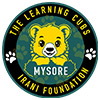Understanding the Concept of Learning Clubs
Learning clubs, also known as study groups or learning communities, are collaborative learning environments where individuals come together to share knowledge, resources, and support each other’s learning journey. These clubs can be formed by students, professionals, or even hobbyists with a common interest in expanding their knowledge and skills in a particular subject or field.
Learning clubs provide a platform for members to engage in discussions, exchange ideas, and work on projects collectively. The primary goal is to create a conducive environment for active learning, where participants can benefit from diverse perspectives and experiences.
The Benefits of Joining a Learning Club
There are numerous advantages to being part of a learning club, whether it’s in an academic setting or a professional context. Here are some key benefits:
1. Enhanced Learning Experience
By participating in a learning club, individuals can gain a deeper understanding of the subject matter through group discussions, peer teaching, and collaborative problem-solving. This interactive approach to learning can lead to improved retention and comprehension of the material.
2. Peer Support and Motivation
Being part of a learning club fosters a sense of community and support among members. It creates an environment where individuals can motivate and encourage each other, leading to increased confidence and a positive attitude towards learning.
3. Diverse Perspectives
Learning clubs bring together people from different backgrounds and experiences. This diversity enriches the learning process by providing varied perspectives and insights, which can broaden members’ knowledge and understanding of the subject matter.
4. Skill Development
Collaborative learning in a club setting can enhance not only subject-specific skills but also soft skills such as communication, teamwork, and leadership. Members have the opportunity to practice and develop these skills in a supportive environment.
5. Networking Opportunities
Participating in a learning club allows individuals to expand their network and connect with like-minded peers who share similar interests. This can lead to valuable professional connections and opportunities for collaboration in the future.
How to Start a Learning Club
Starting a learning club is an exciting initiative that requires careful planning and organization. Here are the essential steps to establish a successful learning club:
1. Define the Purpose and Goals
Clearly outline the purpose of the learning club and establish specific goals that the members aim to achieve. Whether it’s to improve academic performance, gain new skills, or explore a particular subject in-depth, having a clear direction is essential.
2. Identify Potential Members
Reach out to individuals who share an interest in the subject or field that the learning club will focus on. This can be done through social media, community bulletin boards, or by word of mouth. Building a diverse group with varied strengths and expertise can greatly enrich the learning experience.
3. Establish a Schedule and Structure
Determine how often the learning club will meet and the format of the sessions. Whether it’s weekly meetings, online discussions, or a combination of both, having a structured schedule will help members commit to the club’s activities.
4. Assign Roles and Responsibilities
Delegate responsibilities among the members to ensure smooth operation of the club. This may include roles such as a facilitator for discussions, a coordinator for resources, or a communicator for scheduling and updates.
5. Create a Supportive Environment
Foster an inclusive and supportive atmosphere where all members feel valued and comfortable sharing their thoughts and ideas. Encourage active participation and constructive feedback to promote a collaborative learning culture.
6. Utilize Resources and Tools
Take advantage of available resources such as online platforms, libraries, or educational materials to supplement the learning process. Utilize technology to facilitate communication and resource sharing among members.
7. Evaluate and Adjust
Regularly assess the club’s progress and effectiveness in meeting its goals. Solicit feedback from members and be open to making adjustments to the structure or activities to better serve the collective learning needs.
Examples of Successful Learning Clubs
Learning clubs can take various forms and cater to diverse interests. Here are a few examples of successful learning clubs that have made a positive impact:
1. Language Exchange Clubs
Language exchange clubs bring together individuals looking to practice and improve their language skills. Members have the opportunity to engage in conversations, language games, and cultural activities to enhance their proficiency in a foreign language.
2. Coding and Tech Meetups
These clubs cater to tech enthusiasts and professionals seeking to expand their knowledge of programming languages, software development, and emerging technologies. Members often collaborate on coding projects and share industry insights.
3. Book and Literature Circles
Book clubs provide a platform for avid readers to discuss literary works, share recommendations, and explore diverse genres. It’s a great way to discover new perspectives and engage in thought-provoking discussions.
4. Professional Development Groups
These clubs focus on career advancement, skill-building, and networking within specific industries. They may offer workshops, guest speaker events, and mentorship opportunities to support members’ professional growth.
5. Academic Study Groups
Students often form study groups to review course materials, prepare for exams, and collaborate on projects. These groups can enhance learning outcomes and create a sense of camaraderie among peers.
Conclusion
Learning clubs play a significant role in fostering a collaborative and supportive environment for individuals to expand their knowledge, skills, and social connections. By actively participating in a learning club, individuals can benefit from enhanced learning experiences, diverse perspectives, and valuable networking opportunities. Whether it’s in an academic, professional, or recreational context, the concept of learning clubs continues to enrich the collective learning journey of its members.

Leave A Comment